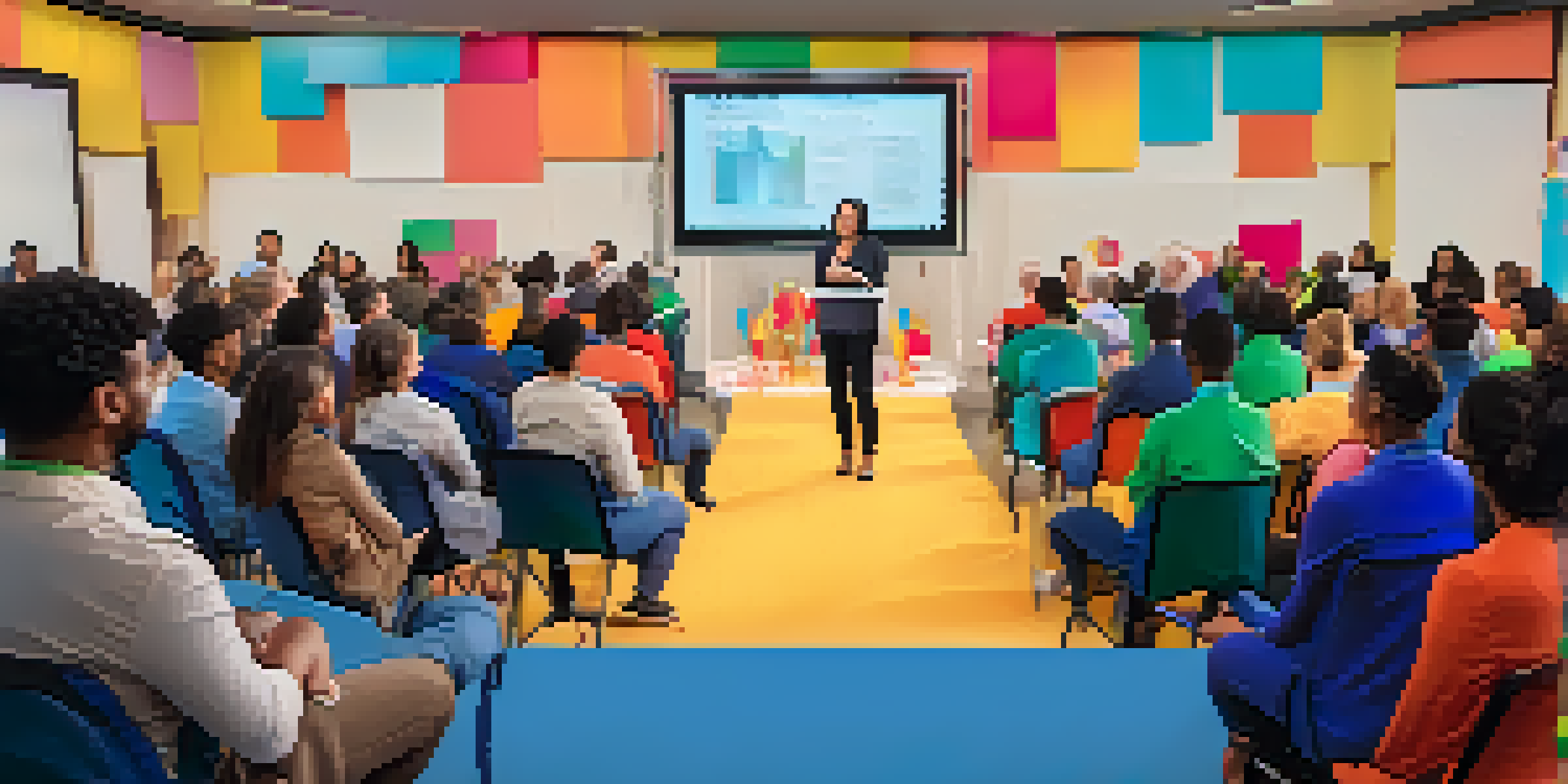Audience Engagement: Techniques to Involve Your Listeners

Understand Your Audience's Needs and Interests
To engage your audience effectively, it’s crucial to know who they are. Understanding their needs and interests allows you to tailor your content to resonate with them. This knowledge can stem from surveys, feedback forms, or simply observing interactions during previous engagements.
Engagement is not just about talking, it's about listening and responding to the needs of your audience.
Imagine attending a concert where the band plays only songs you don’t like. Frustrating, right? The same principle applies to audience engagement; if you don’t cater to their preferences, you risk losing their interest. Make it a point to involve your audience in the planning process whenever possible.
Engaging your audience begins with a genuine interest in what they want. By aligning your content with their expectations, you create a foundation for a more interactive experience that feels personal and relevant.
Utilize Interactive Elements in Your Presentations
Incorporating interactive elements can significantly boost audience engagement. Think polls, quizzes, or live Q&A sessions that invite participants to share their thoughts. These activities create a dynamic atmosphere where listeners feel like active participants rather than passive observers.

For instance, consider a webinar where attendees can vote on topics they want to explore. Not only does this make them feel heard, but it also ensures the content is relevant to their interests. It’s like choosing your own adventure book; the more control they have, the more invested they become.
Know Your Audience's Interests
Understanding your audience helps tailor content that resonates and maintains their engagement.
By using interactive tools, you foster a sense of community and collaboration among your audience. This engagement technique transforms your session into a dialogue rather than a monologue, leading to a more enriching experience for everyone involved.
Storytelling: Making Your Message Relatable
Everyone loves a good story, and weaving narratives into your presentations can captivate your audience. By sharing personal anecdotes or relatable examples, you make your message more tangible and memorable. This technique helps listeners connect emotionally, making your content more impactful.
The greatest gift is not being afraid to question.
Think of storytelling as the secret ingredient in a recipe; it enhances the flavor of your message. For example, if you're discussing a complex data trend, illustrating it with a real-life scenario can clarify your points and keep listeners engaged. It’s all about painting a picture they can visualize.
Incorporating stories invites listeners into your world, making them feel like they’re part of the journey. This connection can significantly enhance their engagement, as they are more likely to remember and resonate with the narrative you've shared.
Encourage Questions and Open Discussions
One of the best ways to engage your audience is by encouraging questions and discussions. By inviting participants to share their thoughts or seek clarification, you create an inclusive environment that values their input. This approach not only enriches the conversation but also demonstrates that you value their opinions.
Imagine being in a classroom where the teacher invites you to ask questions. It instantly feels more welcoming and stimulating. In your presentations or talks, create designated times for audience inquiries to foster this sense of openness and encourage dialogue.
Use Interactive Elements
Incorporating polls, quizzes, and discussions creates a dynamic experience where participants feel actively involved.
When audiences feel comfortable asking questions, they become more engaged and invested in the topic. This engagement leads to a deeper understanding and retention of information, benefiting both you and your listeners.
Use Visual Aids to Enhance Understanding
Visual aids can be powerful tools for enhancing audience engagement. Charts, graphs, images, and videos can break down complex information and make it easier to digest. A well-placed visual can capture attention and reinforce your message, making it more memorable.
Think about how you might explain a difficult concept. Instead of relying solely on words, adding a visual can clarify your point and keep the audience focused. For example, using infographics to summarize key statistics can make a significant impact on audience comprehension.
By integrating visual elements into your presentations, you cater to various learning styles. This inclusivity enhances engagement and ensures that your content resonates with a wider audience, making your message stick.
Create a Sense of Community Among Participants
Fostering a sense of community can significantly enhance audience engagement. Whether through social media groups or dedicated discussion forums, providing a platform for participants to interact creates a supportive environment. This sense of belonging encourages them to engage more actively with your content.
For example, after a workshop, you might create a Facebook group where attendees can continue discussions and share resources. This extends the engagement beyond the initial interaction, allowing relationships to flourish and insights to be shared.
Follow Up After Events
Maintaining engagement post-event through follow-ups and feedback shows appreciation and fosters future connections.
Ultimately, when participants feel like they’re part of a community, they’re more likely to contribute, share, and engage with your content. This collective experience can lead to deeper connections and a more enriching overall experience.
Follow Up to Maintain Engagement After the Event
Engagement doesn’t stop when the event ends; following up is crucial for maintaining the connection. Sending thank-you emails, sharing additional resources, or summarizing key points can keep the conversation going. This not only shows appreciation but also reinforces the value of their participation.
Consider sending a follow-up survey to gather feedback on the event. This demonstrates your commitment to improvement and invites further dialogue. It's like sending a postcard after a great vacation; it keeps the memories alive and lets them know you still care.

By nurturing relationships post-event, you lay the groundwork for future engagements. This commitment can lead to a loyal audience that feels valued and connected, ultimately enhancing their overall experience with your content.
Evaluate and Adapt Your Engagement Strategies
Finally, regularly evaluating your audience engagement strategies is essential for growth. What worked well? What could be improved? Gathering feedback and analyzing participation rates can provide valuable insights into your approach.
Think of this like tuning a musical instrument; continual adjustment ensures optimal performance. By being receptive to feedback, you can adapt your techniques to better meet your audience's needs and preferences.
Incorporating these evaluations into your planning process ensures that your engagement strategies remain fresh and effective. By continuously adapting, you create a more engaging experience that resonates with your audience, fostering lasting connections.